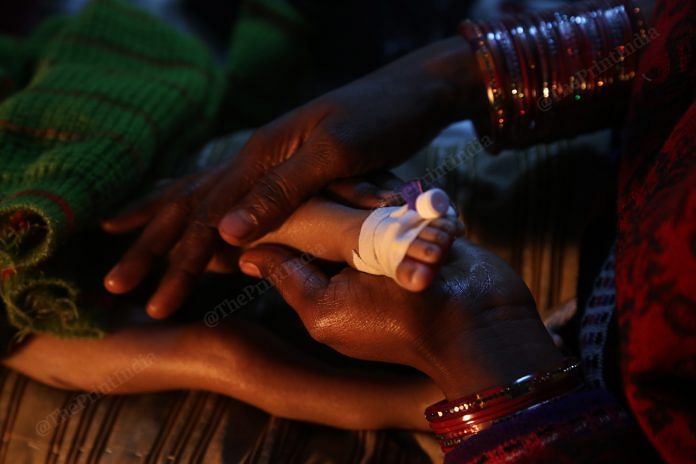Bahraich/Balrampur/Shravasti: In a city on the banks of the Sarayu, in a hospital named after an ancient rishi, a timeless, contemporary, pitiful scene unfolds. Manju, a mother of three, somewhere in her 20s, massages the emaciated legs of her youngest, infant son, Rinku. For the three-month-old child, the diagnosis is laal — red. In Anganwadi workers’ parlance, that’s code for severe acute malnutrition (SAM); a milder peela (yellow) stands for moderate acute malnutrition (MAM).
Rinku is the youngest of five children, all in the laal category, who are currently undergoing treatment at the Nutrition Rehabilitation Centre (NRC) at Bahraich’s district hospital, named after the rishi Balark. The NRC is a short-stay home for children suffering from acute malnutrition, along with their primary caregivers.
More than half of all children under five in Bahraich district suffer from stunting, and the figures are similar in adjoining Shravasti and Balrampur; all three are among India’s four poorest districts, according to the NITI Aayog’s Multidimensional Poverty Index (MPI), 2021. According to an estimate by the Union Ministry of Women and Child Development, of the 33 lakh malnourished children in India, 1.86 lakh are in Uttar Pradesh.
Healthcare workers, doctors, and officials in the districts say there’s no one reason behind the high percentage of child malnutrition in the region, one of the most backward in the country.
The past few years have seen some progress. Compare 2015-16 data, from the National Family Health Survey (NHFS)-4, with the 2019-21 NHFS-5 data, published in November last year, and you’ll see improvements in many nutrition and health indicators, such as the total fertility rate (TFR) and malnutrition. But there’s still a long way to go.
“Compared to the national or even state average, our numbers are still very high,” says a senior district administration official in Shravasti.
Also read: Can’t learn, can’t work, can’t even cross river: Life in 3 of India’s 4 poorest districts, all in UP
Unending misery, depressing numbers
For Manju, the first sign that something was wrong with her three-month-old Rinku was his listlessness. With the help of an anganwadi worker from her village, Baukaha in Tejwapur block, approximately 20 kilometres from Bahraich, she brought him to the district hospital. But her husband, a daily wager who earns between Rs 300 and Rs 350 a day, had to stay back to work and look after their remaining two children, aged six and one.
“I don’t know how my children are managing back home. My husband is a daily wage earner… If he does not go out to earn, there will be no aamdani (income),” an anxious Manju tells ThePrint at the NRC.
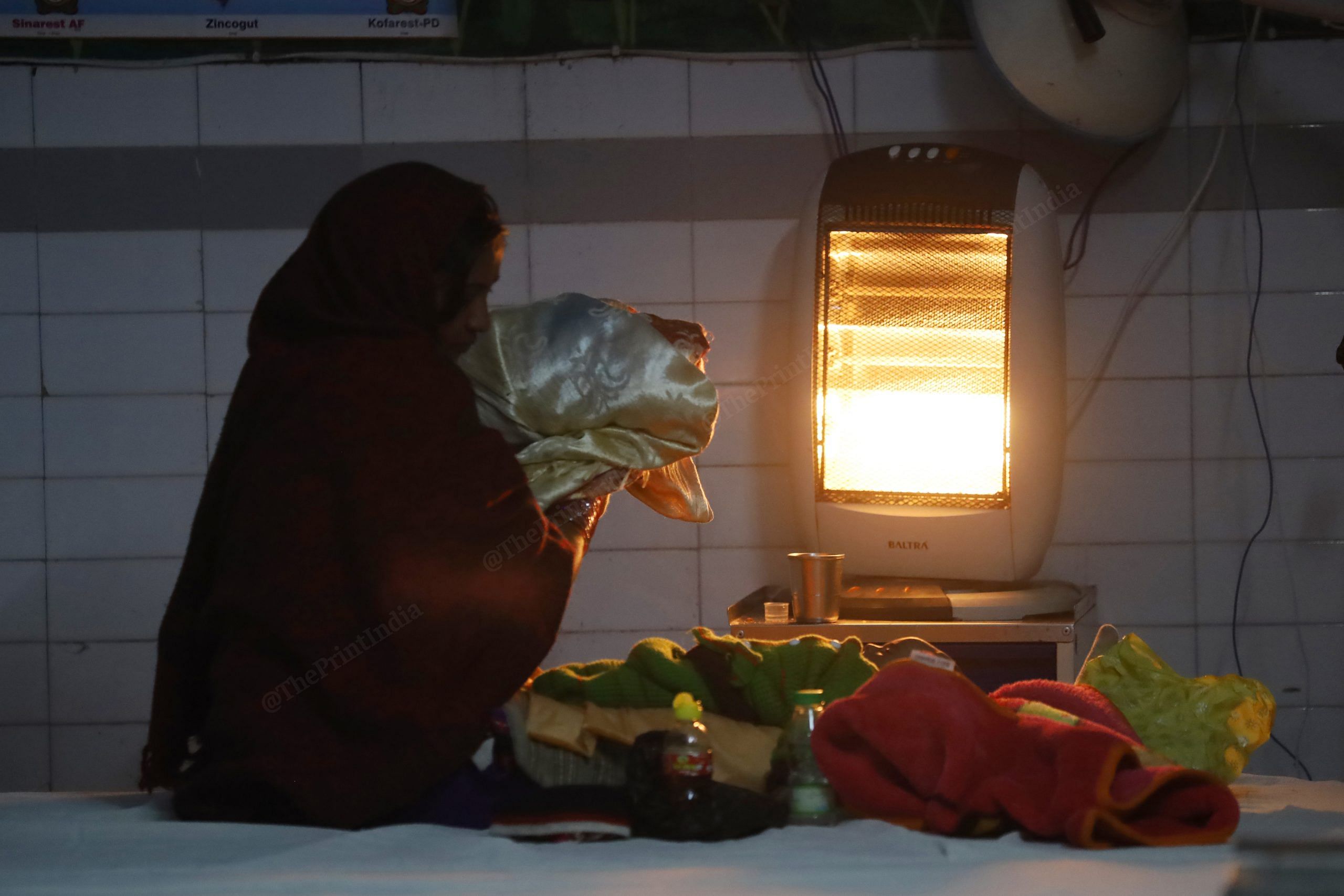
Manju has never gone to school, while her husband has studied up to class five. Every month, they receive 5 kg of foodgrains each at a highly subsidised rate under the National Food Security Act. Their two young children get a packet each of dry rations containing dal, daliya and fortified edible oil from the anganwadi centre under the Integrated Child Development Scheme (ICDS).
But without her husband’s daily income, there would be no money to buy milk for the children, or vegetables and other necessities for the house.
It’s a story that’s repeated often, with small variations, across these three districts.
The National Family Health Surveys classify malnourished children in accordance with the World Health Organization’s (WHO) metrics. Having low weight for one’s height is considered “wasting”, while low-height-for-age is “stunting”, and low-weight-for-age is “underweight”. Thus, these are separate calculations, and their totals need not add up to 100 per cent.
In Bahraich, 52 per cent of children under five suffer from stunting, 38 per cent are underweight, and 14.3 per cent are “wasted” in terms of weight according to NFHS-5.
Similarly, in Shravasti, about 51 per cent of children under five suffer from stunting and more than 40 per cent are underweight; over 20 per cent qualify as “wasted”. In Balrampur, 41 per cent of children are stunted, 37.2 per cent are underweight and 24.9 cent are “wasted”.
In comparison, the figures for all of India are 35.5 per cent stunted, 32.1 per cent underweight, and 19.3 per cent “wasted”.
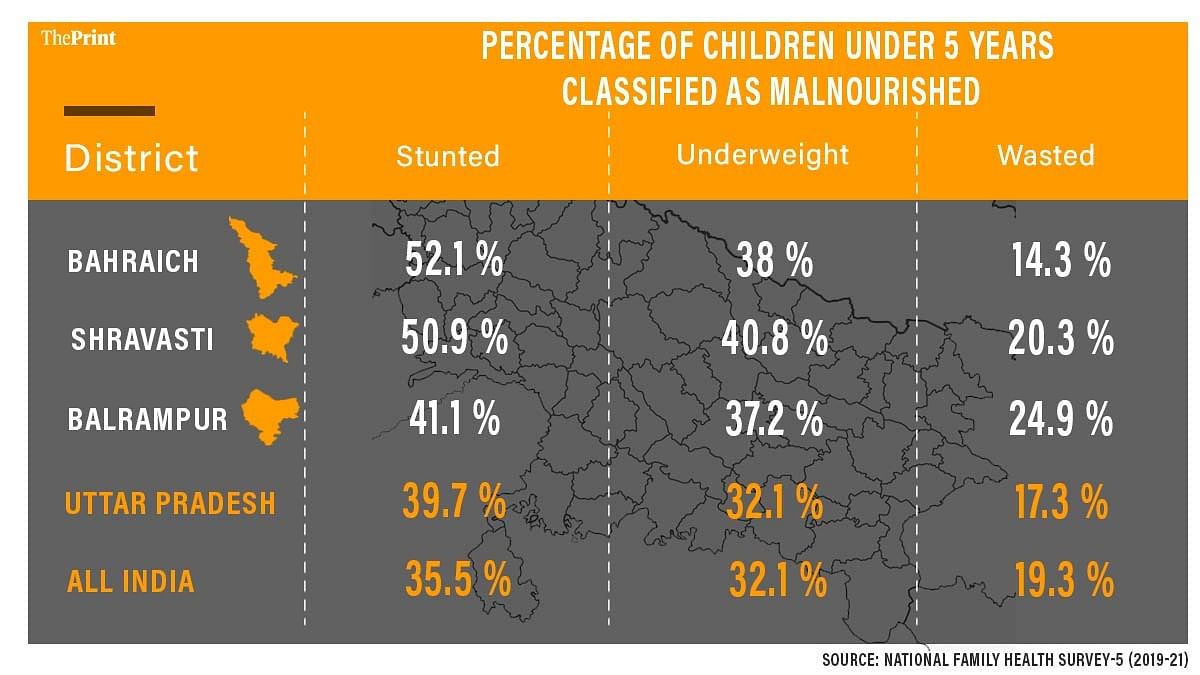
According to Dr Anurag Verma, who’s in charge of the community health centre in Mihinpurwa — the biggest and most backward of Bahraich’s 14 blocks — poor education standards, large families and poverty have all contributed to the high malnutrition rate in this region.

In Bahraich, for instance, the average literacy rate is 49.36 per cent, according to the 2011 Census. The NFHS-5 puts the number of literate women in the district at 38.8 per cent, compared to 66.1 per cent for Uttar Pradesh as a whole, and 75.1 per cent across India.
The total fertility rate (TFR) — the average number of children born to a woman — in Bahraich is one of the highest in Uttar Pradesh at 4.8, much above the state’s 2.7 and India’s 2.2, according to NHFS–4. The TFR is equally high in Balrampur at 4.8, with Shravasti just behind them at 4.2.
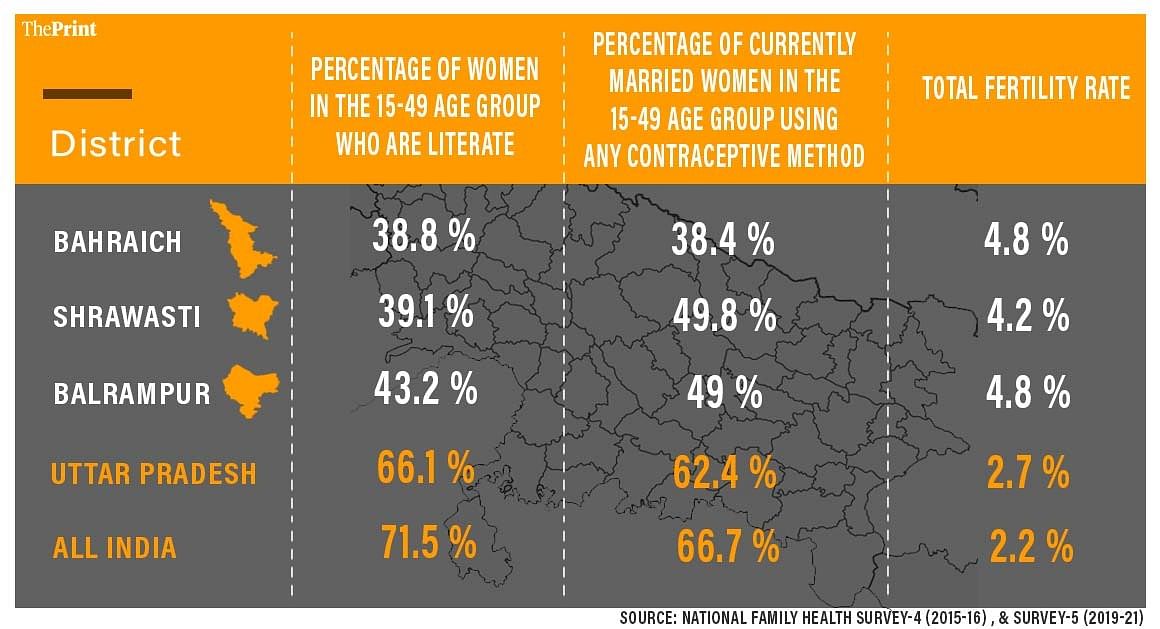
In all three districts, fewer than half of all married women in the 15-49 age group use contraceptives, according to NHFS-5, compared to 62.4 per cent for the state and 66.7 per cent for India.
Also read: Kerala tops NITI Aayog Health Index 4th time in a row, UP stays last despite improving most
Nutrition Rehabilitation Centres
Apart from Manju’s son, there are four other SAM patients undergoing treatment at the NRC who come from similar backgrounds. Two of them are three months old, just like Rinku, while another is a year old and the fifth is two years old.
NRCs were set up in each of India’s districts under the National Health Mission by the Union health ministry to provide curative and preventive services for both mother and child to combat malnutrition.
Doctors attending to the SAM cases tell ThePrint that for every five children who manage to reach an NRC, there are likely to be several others who don’t, because their parents are very poor and don’t have a fallback option.
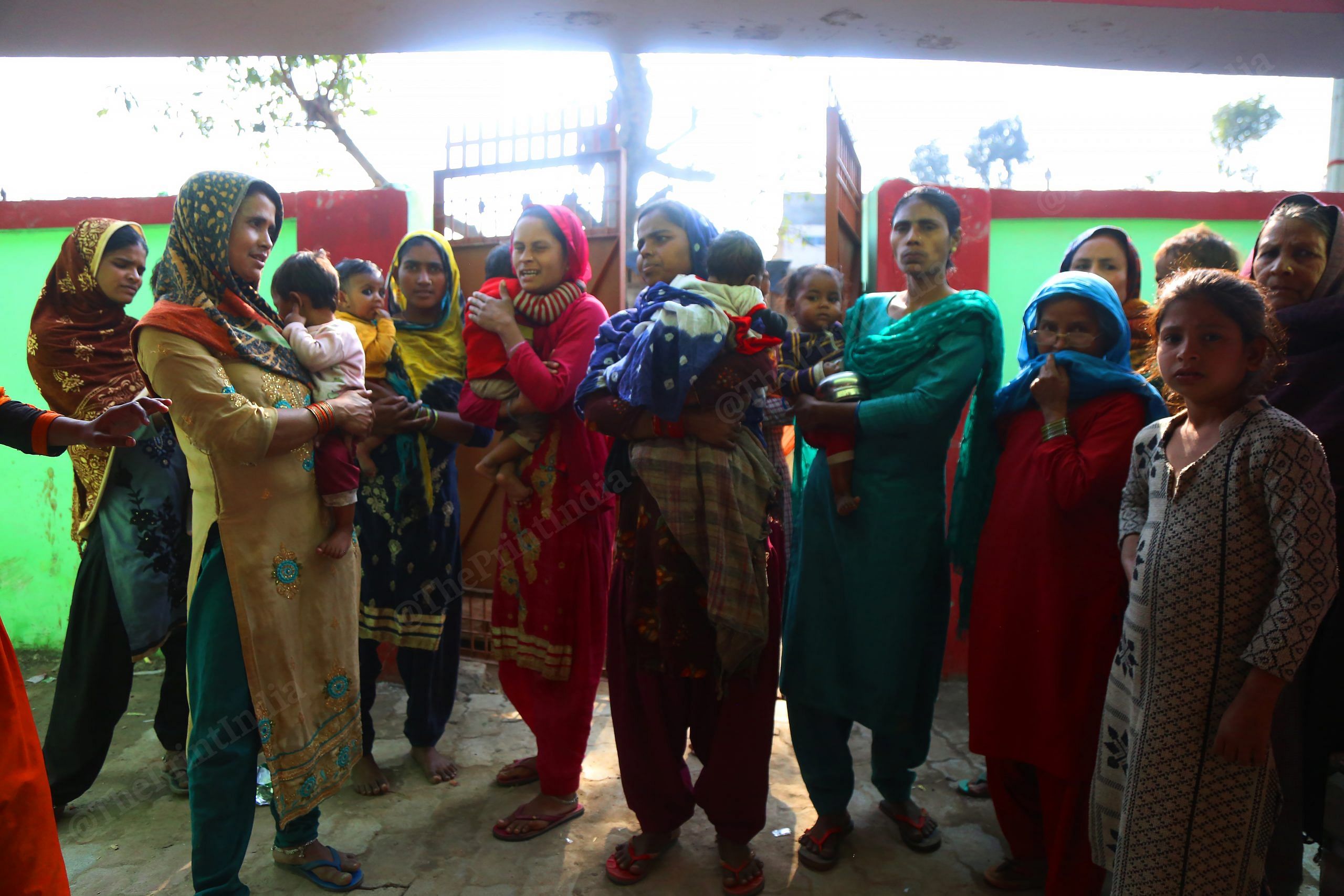
Dr S.K. Tripathi, a paediatrician at the Bahraich district hospital, says all these families come from extremely poor backgrounds and aren’t aware of the nutritional requirements of their newborns. “Many of them are not aware about how crucial breastfeeding is for a newborn child,” he says.
And to make matters worse, he adds, they invariably have large families and almost lead a hand-to-mouth existence. In most cases, both parents are daily wagers — and many are reluctant to abandon work and home to come to the NRC.
“In such a situation, even if a malnourished kid is referred to the NRC by the anganwadi, the family is reluctant to come. Not only because the parents think that if they come, they won’t be able to earn their daily living, but also because the mother will have to leave her family and stay at the NRC for the full duration of the treatment,” says Dr Tripathi.
The NRC at the Bahraich district hospital, also known as Maharishi Balark Chikitsalay, has a total of 10 beds. “We have 100 per cent occupancy most of the year. At times, it goes up to 120 per cent. This time, because of Covid and harsh winters, we have empty beds,” says a nurse at the ward.
High malnutrition despite ICDS & Poshan schemes
Local NGOs working in these districts, as well as experts, point out that the high number of malnourished children also indicates a gap in the implementation of programmes that are meant to ameliorate the situation.
These include the Integrated Child Development Services (ICDS), which targets pregnant and lactating women and children in the 0-6 age group, and the Pradhan Mantri Matri Vandana Yojana (PMMVY), where a cash incentive of Rs 5,000 is provided directly to the bank or post office account of pregnant women and lactating mothers for the first living child of a family.
The ICDS was launched in 1975 to reduce malnutrition and improve the health status of children. It has been restructured many times since then, but funding issues and poor accountability at the grassroots has resulted in gaps in delivery at various levels.
According to the ICDS guidelines, anganwadi centres (AWC) are supposed to be the first village outpost for health, nutrition, and early learning. They must have adequate infrastructure facilities such as space to play, kitchens, safe drinking water, and child-friendly toilets. But on the ground, the reality is different in many villages.
There are instances galore where the AWCs don’t have a dedicated space — either their own or rented accommodation — from where they can run. In Gulalpurwa village in Bahraich’s Mihinpurwa block, the AWC runs from a small, dingy room, one of the two rooms of the anganwadi worker, Vidyawati’s, house.
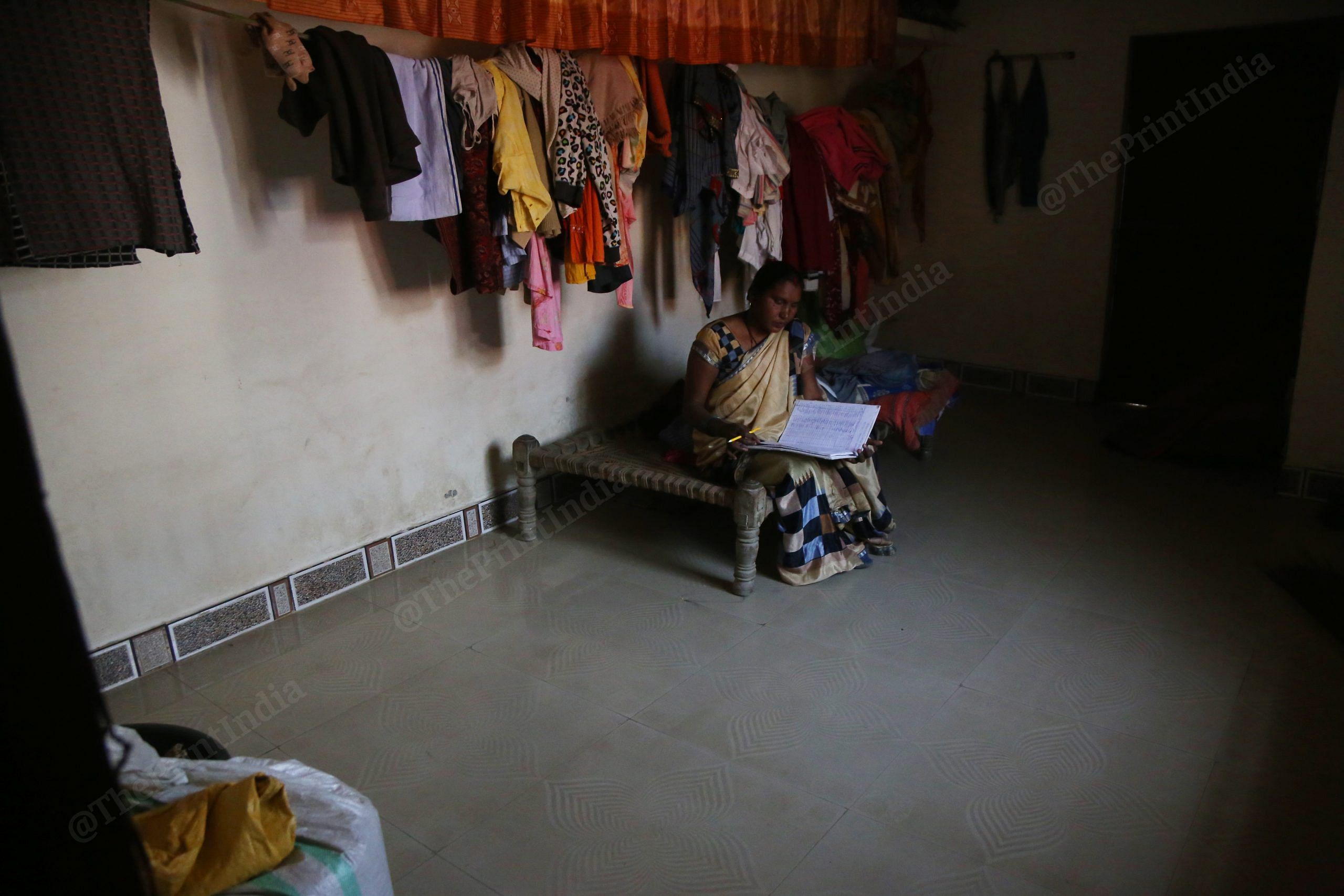
“The anganwadi centre was running from a rented property. But we had to move it to our house after we did not get the rent from the administration. I have flagged it several times to the DPO (district programme officer) but nothing happened,” says Vidyawati.
The AWC doubles as Vidyawati’s husband’s bedroom. “We have just two small rooms and four people in the family, including my two growing daughters. It’s difficult for all four to sleep in one room,” says her husband, Kanshi Ram Gautam.
It’s a similar story at Dularpur village in Bahraich. The centre runs from one room of the panchayat bhavan. There’s nothing in the room — no weighing machine, no pre-school learning material. “I keep it in my home and bring it here when needed,” says Sharif Jahan, the village’s anganwadi worker.
It’s at these centres that anganwadi workers also counsel women on family planning, provide nutrition supplements to pregnant women and children, check the health of children, and store dry rations.
That there are gaps is obvious.
Anganwadis were required to provide dry rations to children in the 0-6 age group during the Covid pandemic, when the centres were closed. But there are many complaints about how many children didn’t receive dry ration packets, and about long delays. And, how no anganwadi worker came to inquire about the health of a pregnant or lactating mother.
Also read: 3 cr on unorganised workers’ database, 48% women, 55% don’t have Aadhaar-linked accounts
‘We are made the scapegoats’
Anganwadi workers on their part say they take flak from both sides — the intended beneficiaries as well as the government —despite the limited resources at their disposal, and low wages.
“We distribute whatever dry ration supply we get. If the supply is delayed, what do we do? At times during the pandemic, there was a delay in supply,” says Sharif Jahan.
Manju Singh, an anganwadi worker at Bahraich’s Nidhipurwa gram panchayat, says they were among the frontline workers who stepped out of their house every day at the peak of the pandemic.
“We do not miss a single child registered with us. The areas under each anganwadi are huge, but we went to houses of children when nobody from their families could come to collect dry rations. Despite that, we are made the scapegoats. We get a measly salary of Rs 5,500 every month. Do you think it’s enough to support one’s family in today’s time? Nobody talks about these issues,” she says.
Asked how frequently she goes to counsel married women on family planning, Sharif Jahan says, “It’s not that we do not tell them… that’s our job. But if they don’t listen, what do I do? They come from poor families, and see more children as more earning members supplementing the family income.”

District administration officials, however, brush off any complaints of gaps in delivery. Bahraich district magistrate Dinesh Chandra tells ThePrint that there has been no delay in the supply of rations, be it under the public distribution system (subsidised rations) or ICDS. “We have a very streamlined system and ensured that the poor got their supply without fail even during the pandemic,” he says.
Prof. Bibhuti Malik, dean of the social science department, Babasaheb Bhimrao Ambedkar University, Lucknow, says one aspect of why the region has remained backward is the people’s “kamchalau” (do the minimum possible) attitude.
There is no public accountability for politicians or the administration for poor services and gaps in delivery, he says.
“Take, for instance, the high malnutrition rate despite specific schemes to tackle it like ICDS, which has been running since 1975. Why does nobody ask the reason for this? Why are the benefits of implementing ICDS not showing? There are leakages. Anganwadi centres are there but aren’t working properly,” he says.
(Edited by Rohan Manoj)
Also read: Unemployment and unlimited data pack — UP’s youth are neither angry nor idle


